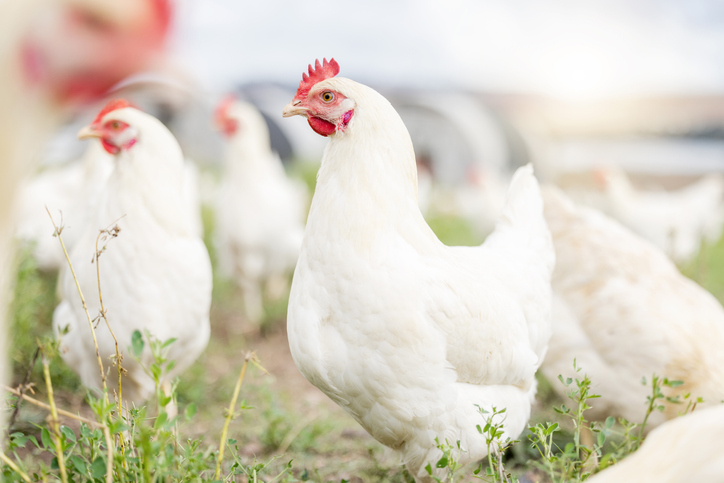The next viral pandemic, some predict, is likely to be caused by an influenza virus. And the influenza viruses that infect birds (influenza A viruses) are closely watched emerging pathogens. Indeed, the large H5N1 outbreak in birds earlier this year, across poultry and wild flocks in the United States, Europe, and Asia, has raised concern and makes the need for measures to counteract the spread of the virus that much more pressing.
Now, for the first time, genome editing has generated chickens partially resistant to infection by influenza virus A. The findings, which indicate that multiple genetic modifications would be required to curtail viral escape, present a potential strategy to help mitigate the spread of avian influenza into farmed poultry from wild bird sources.
This work was published in Nature Communications in the paper, “Creating resistance to avian influenza infection through genome editing of the ANP32 gene family.”
Avian influenza is widely dispersed across Asia, Europe, Africa, and the Americas representing a threat to wild bird species, economic costs to farmers, and risk to human health. Poultry vaccination against avian influenza has not yet been reliable due to the rapid antigenic drift of field viruses and is controversial owing to political and economic implications. In chickens, avian influenza relies on the host protein ANP32A for its life cycle, which represents a potential target for creating virus-resistant birds.
Researchers edited the ANP32A gene in chicken germ cells to restrict influenza A activity. More specifically, the authors used CRISPR/Cas9 to generate homozygous gene-edited chickens containing two ANP32A amino acid substitutions that prevent viral polymerase interaction. They found that fully-grown chickens were resistant to a physiological dose of influenza A exposure from other infected birds and displayed increased resilience. After a challenge with influenza A virus, nine of the ten edited chickens remained uninfected.
However, when the researchers infected with a higher dose (1,000 times higher,) breakthrough infections occurred. The influenza virus, they found, had mutated to be able to use the edited chicken ANP32A. Unexpectedly, the authors wrote, “this virus also replicated in chicken embryos edited to remove the entire ANP32A gene and instead co-opted alternative ANP32 protein family members, chicken ANP32B and ANP32E.”
The birds showed no adverse health or egg-laying productivity effects when monitored for over two years. The authors suggest that additional editing and deletion of the other associated genes (ANP32B and ANP32E) in chicken cells would prevent virus replication.
The findings suggest gene editing as a possible route to create chickens resistant to infection by avian influenza. However, the authors caution that further study is needed to ensure animal health is not impacted and that multiple edits to the ANP32 family of genes might be required to eliminate the possibility of viral evolution.


